How to Visualize Feedback Scores With NPS Reports
Read More
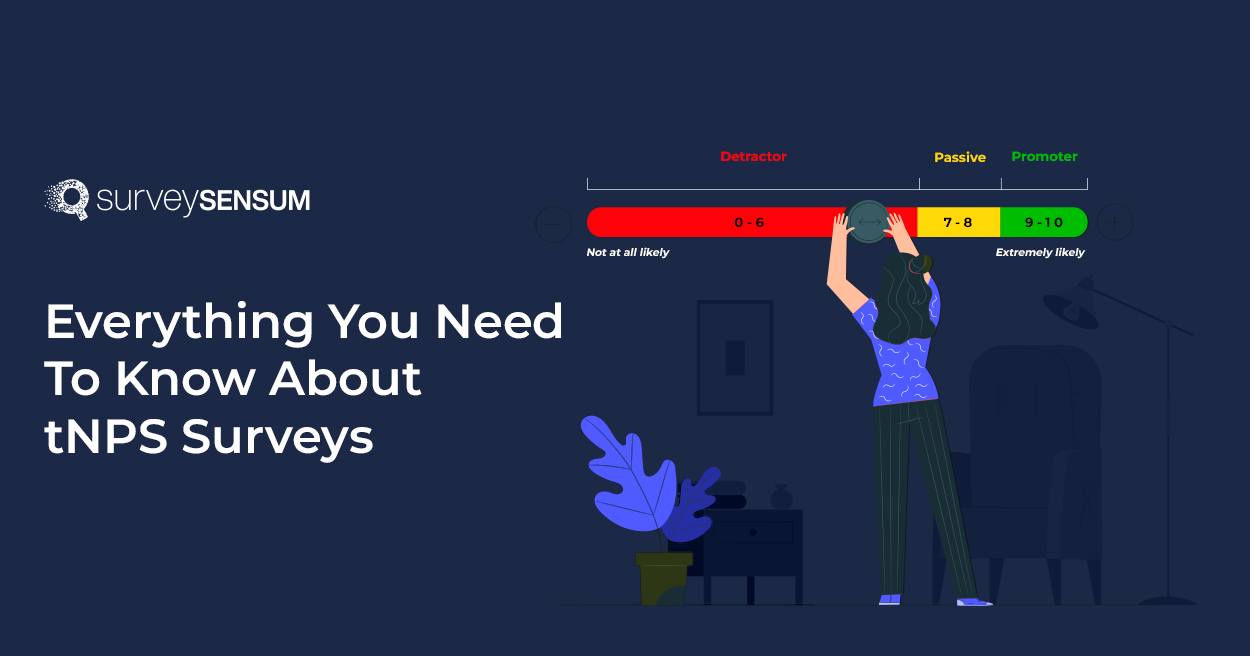
In the realm of customer-centric businesses, one thing is clear—they understand the immense power of customer feedback. But do you know why it has become such a crucial element in their quest to deliver exceptional experiences?
It’s simple—they know that customer feedback holds the key to unlocking insights that can elevate their game and exceed customer expectations. To stay ahead of the curve and continuously improve the customer experience, businesses turn to a variety of customer feedback metrics.
Among these metrics, Transactional Net Promoter Score, or tNPS, has emerged as a popular choice. As a dynamic sibling of the renowned Net Promoter Score (NPS), tNPS goes beyond traditional surveys and measures customer satisfaction and loyalty at every touchpoint along the customer journey.
But here’s the thing—while tNPS may seem straightforward, truly leveraging its potential requires a strategic approach and an effective Net Promoter software.
That’s where we come in.
This tNPS Blog is your go-to resource for unlocking the secrets of this invaluable metric. We’ll equip you with the knowledge, strategies, and best practices to extract meaningful insights from your tNPS data and drive impactful change in your organization.
Let’s get started!
tNPS or Transactional Net Promoter Score is used to gather customer satisfaction after a customer interacts with your business or after a transaction.
It helps you improve your products and services, increase customer retention, and more.
By analyzing the feedback collected through tNPS surveys, you gain insights into your customers’ feelings and experiences on a granular level. This data enables you to identify areas for improvement in your offerings, ensuring they meet your customers’ needs and expectations.
tNPS differs from the traditional NPS – tNPS focuses on specific touchpoints or transactions while NPS typically asks a loyalty question about recommending the business overall.
By utilizing tNPS on a transactional basis, you can gather valuable insights alongside regular NPS surveys, which provide a holistic view of customer satisfaction and their overall experience.
Remember, improving customer experience can have substantial financial benefits, as Forrester suggests that a 10% improvement in customer experience can translate into significant revenue growth and other positive outcomes.
See the example image below for a visual representation of a tNPS survey:

But what makes tNPS important?
Here’s a great example of an insurance company.
Jane recently met with a car accident. Luckily her car was insured, so she reached out to the insurance company.
After contacting the insurance company, she had to undergo a documentation process to proceed with the claim.
She was pissed with the lengthy documentation process but was still trying to do it.
Meanwhile, she received a tNPS survey after an insurance call asking about her interaction. She mentioned having a hard time with the lengthy documentation process.
Upon receiving Jane’s feedback, the insurance company promptly acknowledged the real-time insights and instantly assigned an agent to aid her with the documentation process.
Within an hour, she got a helping agent who guided her through the entire documentation and insurance process. Further, the agent also asked several questions to understand what happened.
By conducting tNPS, the insurance company
This is how the insurance company benefits from conducting tNPS.
Moreover, the interaction between the agent and Jane helped the company to
After the completion of the entire insurance process, she went back satisfied with the received services.
That’s why conducting tNPS surveys is crucial.
There are many advantages that tNPS surveys bring to any business.
By leveraging tNPS, you can proactively address customer needs, enhance loyalty, and drive business growth based on real-time insights and actionable feedback.
But, with the advantages, there come a few disadvantages as well.
tNPS surveys can yield fluctuating results due to various factors.
For example, if a customer had a positive experience during one transaction but encounters an issue in the next, their tNPS score may vary significantly. This fluctuation can make it challenging to track progress accurately and identify consistent trends or areas for improvement over time.
tNPS gathers feedback only at specific touchpoints, providing a limited scope of customer satisfaction. Let’s say you run a tNPS survey after a customer completes a purchase on your e-commerce platform.
While you may receive feedback related to that particular transaction, it might not capture their overall experiences with your brand, such as interactions with customer support or website usability. This limited scope can hinder your ability to understand the holistic satisfaction of your customers.
Holistic Understanding: To gain a comprehensive understanding of customer satisfaction and experience, consider using alternative feedback metrics alongside tNPS.
For instance,
By utilizing a combination of these metrics, you can capture a broader range of feedback, enabling you to identify patterns and trends across different touchpoints and obtain a more holistic view of customer sentiment.
Now comes the question – when to use tNPS surveys?
Sending tNPS surveys at the right touchpoint can give you valuable customer insights about your brands’ products and services.
Keeping its importance in mind, let’s find out at what touchpoints you can send tNPS surveys to drive customer feedback efficiently.

During the onboarding phase, businesses can leverage tNPS surveys to gather real-time insights and assess customers’ satisfaction levels immediately after they begin using the product or service.
By including targeted tNPS questions, businesses aim to understand how likely customers are to recommend the product or service based on their onboarding experience.
The collected tNPS data during onboarding helps businesses identify potential issues or bottlenecks that customers may encounter during the initial stages of their journey. This feedback enables businesses to address concerns promptly, improve the onboarding process, and enhance overall customer satisfaction and loyalty from the outset.
Following are the questions that you can ask in tNPS surveys after the onboarding process:

Using tNPS surveys after purchasing helps you to collect customer feedback and assess their satisfaction and loyalty immediately after purchase.
After a customer completes a purchase, businesses can leverage tNPS surveys to gather valuable insights about their experience and the likelihood of recommending the product or service to others.
By using tNPS after purchasing, businesses can
So, include these types of tNPS questions in your survey:

Using tNPS surveys after a new product launch or update process helps you to gather customer feedback and assess their satisfaction and loyalty specifically related to the launch or update of a product.
After introducing a new product or rolling out significant updates, businesses can leverage tNPS surveys to capture customer sentiment and gauge their likelihood of recommending the product based on the changes.
Here are the questions that you must ask in your tNPS survey at this touchpoint:
By using tNPS after a new product launch or update process, businesses can

Sending tNPS surveys post Customer Service helps you to gather customer feedback and assess their satisfaction and loyalty after a customer service interaction.
After a customer has interacted with your customer service team or received support, businesses can leverage tNPS surveys to measure their satisfaction with the service provided.
After the customer service team has resolved your customer’s issues, send them tNPS asking the following questions:
By utilizing tNPS post-Customer Service, businesses can
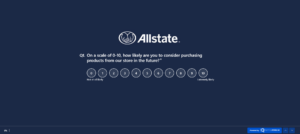
tNPS surveys for in-store help you to gather customer feedback and assess their satisfaction and likelihood of recommending the business while they are physically present in a physical retail store or location.
When customers visit a store, businesses can leverage tNPS surveys to capture their immediate feedback and measure their satisfaction with the in-store experience. These surveys are typically conducted on-site, allowing businesses to collect real-time data and understand the impact of their in-store operations on customer loyalty.
Consider asking these tNPS survey questions to your customers:
By using tNPS surveys in-store, businesses can

Asking follow-up questions after the above-given questions will help you to know the reason behind their given score. Getting to know the WHY behind the score will update you about the latest trends and evolving customers’ expectations.
Also, it allows you to listen to your customers in-depth. So, you can inculcate the data in your product map to stay ahead of the competition.
With these specific touchpoint-based questions, you can ensure delivering a positive experience throughout their customer journey.
Here are the 20 tNPS questions that you can ask in your survey:
Explore SurveySensum to create a FREE NPS Survey
Now that you know what tNPS survey questions you should ask, it’s time to calculate your received tNPS scores.
The formula to calculate tNPS is the same as NPS.
To calculate the tNPS, use this formula:
Promoters% – Detractors%

For example, you conducted a survey and gathered 200 responses in total. Out of 200 responses, let’s say,
So, your tNPS score will be
By calculating tNPS, you will get to know how your products and services are performing and how many loyal customers you have.
You can also try to calculate your NPS here with the NPS calculator.
By now, you must have calculated your NPS Score. But is it good or bad? How can you judge?
Understanding what constitutes a good NPS score or tNPS score in your industry requires conducting research, as tNPS scores can vary across industries and geographical locations. However, here are some general guidelines to consider:
It’s important to note that these are general benchmarks, and the specific target tNPS score may vary depending on your industry, customer expectations, and other factors.
To determine a good tNPS score for your business, it is recommended to conduct industry-specific research and consider any unique specifications that apply to your organization.
Additionally, there are three key factors that can influence your transactional Net Promoter Score.
Various factors can influence your transactional Net Promoter Score depending on the type of product or service you’re giving.
Let’s dive into 3 factors influencing tNPS:
By considering these factors and continuously monitoring and analyzing your tNPS data, you can gain a deeper understanding of your customer’s perceptions and work towards improving customer satisfaction, loyalty, and brand advocacy.
This was about factors affecting tNPS, but do you know how to create tNPS surveys and what questions to ask?
You can create a tNPS survey with any online survey-building tool.
Here we are using SurveySensum, an omnichannel survey tool.
Follow these 5 steps to create your tNPS surveys in no time.
STEP 1: Visit SurveySensum and Sign Up for FREE.

STEP 2: Click on Create Survey and choose the in-built template of NPS.
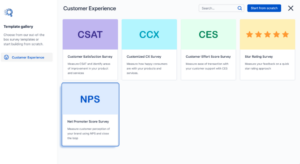
STEP 3: Customize the question and do the branding as per your business requirements and click on Share Survey.
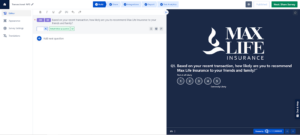
STEP 4: Send the survey on the right platform to boost the survey response rate. You can also send surveys on WhatsApp.
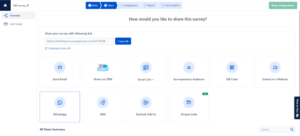
STEP 5: Once you begin gathering the customer feedback, analyze the responses with Text Analysis and view it on the powerful, customizable dashboard.
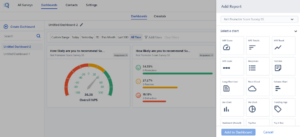
With these 5 steps, you can easily launch your tNPS survey and ask any of the 20 tNPS survey questions given above. But are you using the gathered data appropriately?
If not, learn here how to use tNPS gathered data.
Create FREE NPS Surveys With SurveySensum
After launching the tNPS survey, you will get both quantitative and qualitative data that will help you to understand your customers.
To efficiently use the tNPS data, deep dive into the open-ended feedback and use a strong text analytics tool that can analyze the text and sentiment of the customer.
Here we are using the Text Analysis that SurveySensum offers to analyze customer feedback in depth.
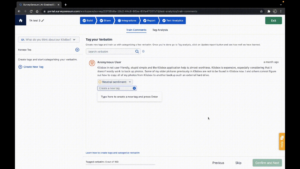
Text analysis is an AI tool that needs to be trained first. So, follow these steps to analyze open-ended feedback efficiently:
After doing this, you can check whether the same issues are occurring on other platforms or not. Thereby, you will be getting to know what your customers are experiencing and expecting, what needs to be done, improved, and so on.
When it comes to measuring customer satisfaction, it’s important to use the right tool for the right purpose.
While tNPS (transactional Net Promoter Score) surveys have their merits, it is recommended to use CSAT (Customer Satisfaction Surveys) instead for certain scenarios.
Using transactional NPS surveys after every single transaction can yield inaccurate results. Loyalty takes time to build, and measuring it too frequently may not provide an accurate reflection of true customer loyalty.
Instead, Relationship NPS surveys are best suited for measuring overall loyalty and should be conducted once a quarter or twice a year. This allows for a more comprehensive assessment of customer loyalty over time.
On the other hand, if your goal is to measure the satisfaction of each individual transaction, CSAT surveys are the way to go! CSAT surveys capture specific feedback about customers’ satisfaction levels after each transaction, providing valuable insights into the customer experience at a granular level. This enables you to identify areas of improvement and make targeted changes to enhance customer satisfaction.
By using CSAT surveys for transactional satisfaction measurement and Relationship NPS surveys for overall loyalty assessment, you can gain a holistic understanding of customer satisfaction and loyalty. This approach ensures that you gather accurate and meaningful data to drive improvements in the right areas.
At SurveySensum, we provide the tools and capabilities to deploy both CSAT and Relationship NPS surveys. We empower you to measure customer satisfaction effectively and make data-driven decisions to enhance the overall customer experience.
